While the Canonet is my classic 35 from the 1970s, the GR1 is my classic 35 from the 1990s. Released in 1996, it is a Point-and-Shoot designed from scratch to embody a number of semi-professional attributes. Auto-focus (with some manual options), full-auto exposure (with aperture priority override) and exposure compensation, it was made with a magnesium chassis, and magnesium body covers.
 1996 Ricoh GR1.
1996 Ricoh GR1.The camera feels really good in the hand as a result. It is extremely thin (25mm), and the cool metal covers and metal shutter release have a glorious tactile feel. Metal parts abound. Overall size vs function continues to amaze me. This camera is tiny, motor-wound and really quiet, it is simply a little joy to use. The auto-loading function pre-winds a whole film; accidental back opening damage is minimized as a result.
From its first introduction, it morphed from the plain-Jane GR1, through the GR1 Date, GR1s, GR1v and finally the neato GR21. None of which are built any more. It was available in two colors; silver and black:
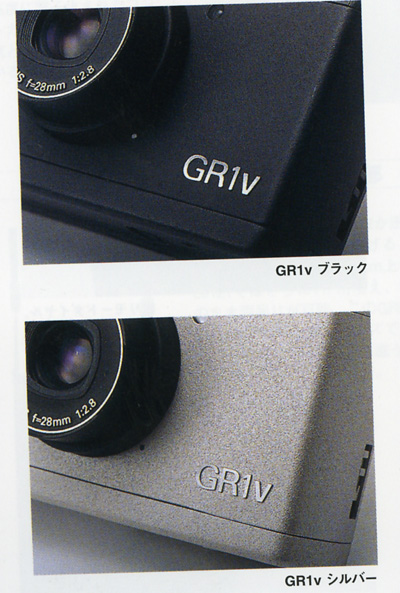
Except for its 'consumer' finish of silver, it is identical to the black GR1. So, if you're looking to get a GR1 and are more interested in the performance over street-cred, you can save maybe \10,000 in buying the lesser finished silver.
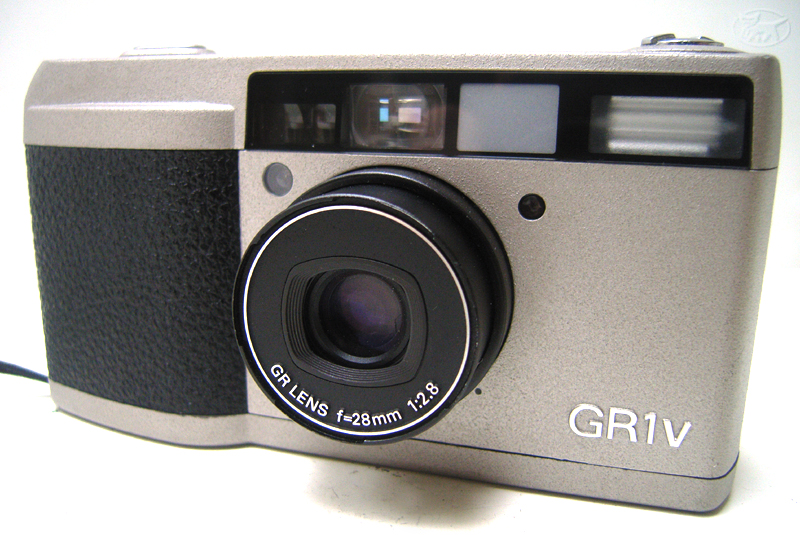
The only operational difficulty I've observed between the two is the contrast between the aperture dial and its lettering on the silver model is hard to read sometimes.

Note early silver plain jane GR1 have a matching silver lens surround, whereas the later GR1s and v have the same black lens surround as the black GR1.
While the GR1 series all had a 28mm
f2,8 lens and aperture priority, they also had a few manual options to assist the Point-and-Shoot crowd who wanted a bit more control. With the GR21, Ricoh introduced a 21mm lens to the already excellent GR chassis.
The GR1v matched the GR1s' date capability with a few extra programming highlights, including the ability to override the base DX functionality. The GR21 too has DX-override, and also gets an external flash-socket.
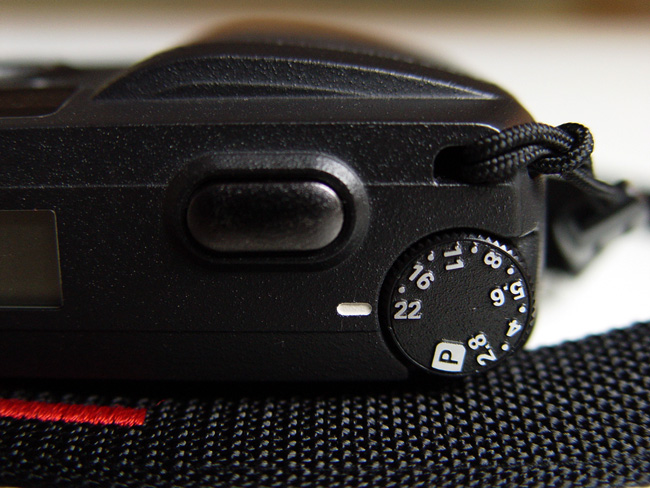 Aperture Control. Ricoh GR1.
Aperture Control. Ricoh GR1.All GRs have an exposure compensation dial to allow additional control in either P-mode, or in aperture priority mode (+/- 2 stops). The aperture priority / P dial is easily tweaked with the thumb when shooting, making manual control a one-handed breeze.
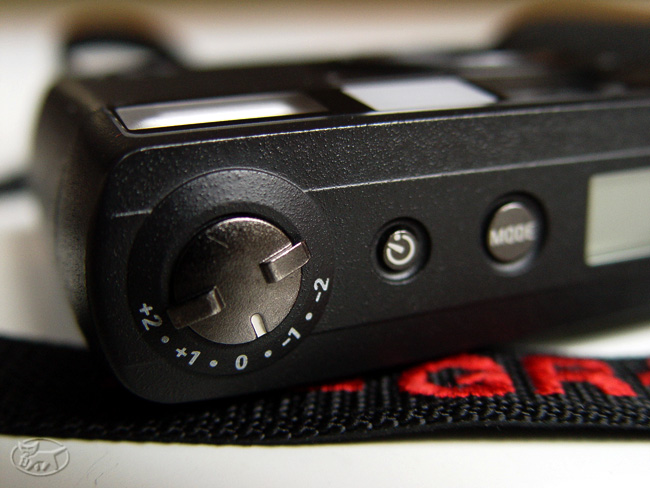 Blued Steel Exposure Compensation. Ricoh GR1.
Blued Steel Exposure Compensation. Ricoh GR1.Shutter release lag is nil in all modes (after auto-focus). Auto-focus lag is measurable, but not an issue - a simple `whrr` and its locked on. If auto-focus lag is an issue, a number of manual override settings are available.
The non-s/v version lacks the green backlit LCD, but you can still see the display well in low-light conditions. The viewfinder however is often a source of complaint. I find no major problems with it, knowing its size and functions have been designed down to support the overall small camera's size.

The lens coatings also made at least one change during production:

The viewfinder's functions are back-lit with a green LED in the dark, and some complaints probably stem from its intermediate- to low-light performance before the LED is tripped on.
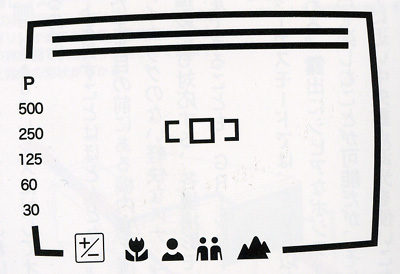 Viewfinder.
Viewfinder.Filters, hoods, and special cases are also available. For those concerned about such matters the hood is considered by some necessary, as flaring is supposedly apparent in the short lens/body combo. Flare? Bring it on I say.
 GR1s with dinky little lens hood fitted.
GR1s with dinky little lens hood fitted.Picture quality is excellent, with sharpness far in excess of that expected from a regular Point-and-Shoot. The manual override functions are almost always used to exert a level of control over my results, and I am very happy with the outcome.
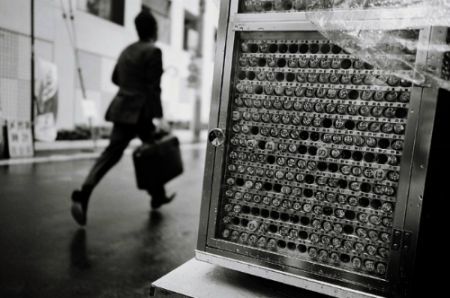 Nihonbashi Gray Mouse. Ilford XP2.
Nihonbashi Gray Mouse. Ilford XP2.Light vignetting is sometimes visible at
f28. The small built-in flash is effective for those close night shots (to 3m), and it slow-syncs in aperture priority mode. Nice.
 Shibuya Gungero. Ilford XP2.
Shibuya Gungero. Ilford XP2. Talk about nice color & sharpness. Fuji Pro400
Talk about nice color & sharpness. Fuji Pro400
XP2 Super and the GR1 seem to go together very well...
The GR line has recently been supplemented with a GR Digital. While the camera looks essentially the same, apart from the magnesium body, it is a different camera entirely. While Ricoh claim the GR lens has been duplicated for the GR Digital, I cannot imagine this is true as the optical qualities of a lens engineered for a digital sensor should be different to a conventional film lens. Still, it makes for a nice story, and carries the GR name into the future; perhaps making a few question its origins and take the step to find out what the fuss was about (as I have).
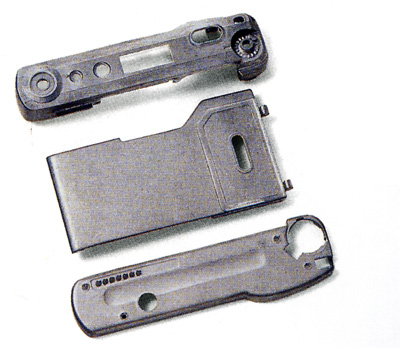 GR series magnesium moldings.
GR series magnesium moldings.I bought this one as my surrogate digital camera. Small, fast, battery efficient, I can carry it loaded with ISO400 C41 XP2 and get a 45-minute turn-around onto CD. Not quite a routine PaS, and a little secret for photographers here in Japan. Jessica Michibata and Moriyama Daido amongst others...

Black GR1 'Daido Moriyama', top of page, and Silver 'Jenson Button' GR1v also above. All I need now is for Araki to sign my Plaubel...
GR1s range in price from USD200 to USD500, and GR21s are around USD1500.
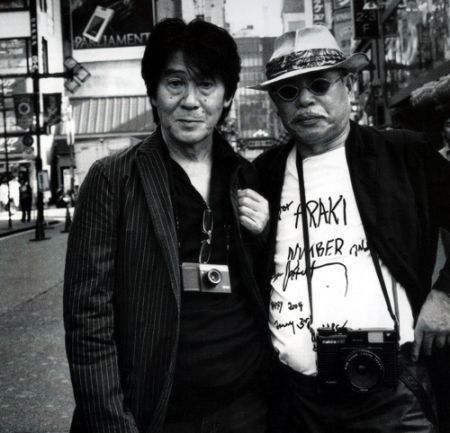 Moriyami and Araki in Shinjuku (and GR21).
Moriyami and Araki in Shinjuku (and GR21).The GR21 is a slightly different kitten; made in Japan, as opposed to Taiwan like most (if not all) GR1, the lens does not fully retract, and it does not have an integrated lens cover, using a conventional external clip-on. Filter rings are used to accept a variety of optional filters, and a 21mm specific lens-hood.

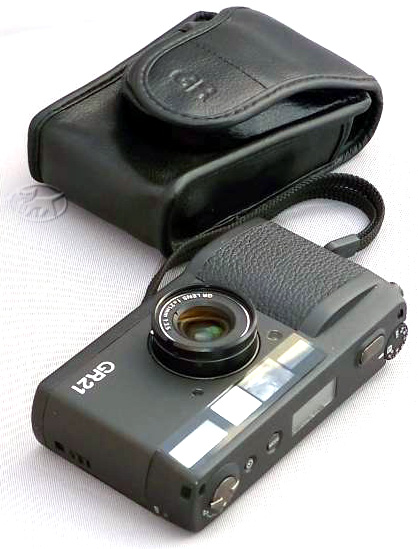
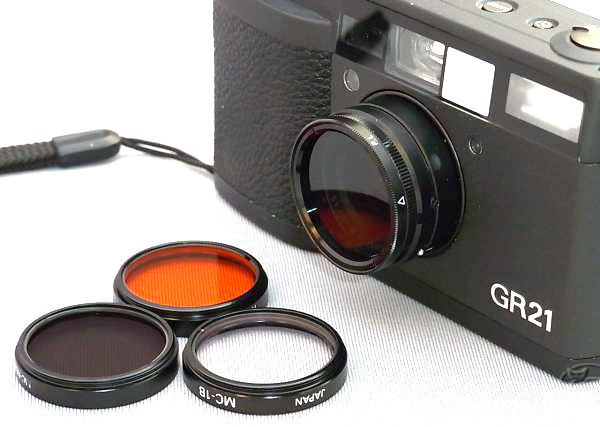
Still want a GR, but like a full RF? Then you can buy one of these:
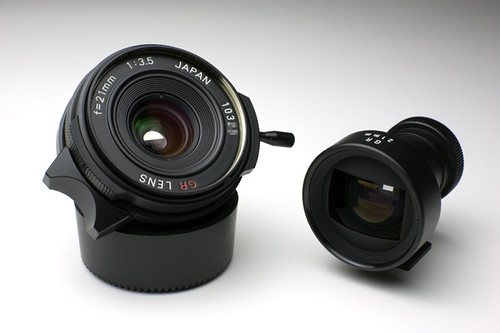 GR21mm with Leica Mount for RFs.
GR21mm with Leica Mount for RFs.Maintenance Note: Some GR users have complained of either shutter lag, or a small delay in the auto-focus function. This camera too had a similar problem, and it appears to be caused by a slight degradation of conductivity in the electric shutter release button. A small squirt of electrical contact cleaner and a blow of puffer air into the shutter button fixed this immediately.
If you're really into your GR, you can collect the genuine Ricoh shop-display rock:
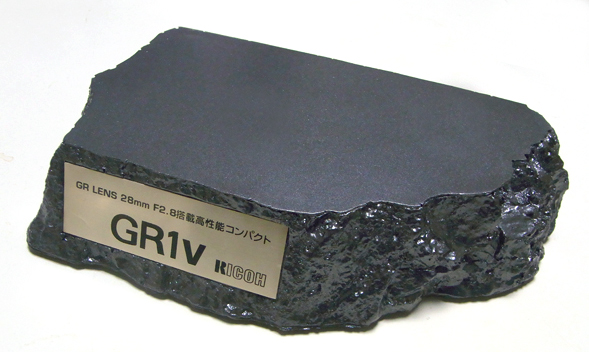
Next: The Submarine. Have fun.
